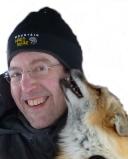Genetics
Vole Brains and Why You Should Care About Them
The vole brain is a gold mine on what makes individuals act prosocially
Posted July 13, 2012
You are going to be a big vole fan after you read this. Don’t say I didn’t warn you. So here goes.
One of the primary reasons we study the human brain is that we want to figure out ways to get people to act a bit nicer to one another, and an understanding of how our brain works seems like a good place to get some help on that front. Here, I will make the case that the vole brain is a veritable gold mine of information on what makes individuals act in a prosocial manner.
Prairie voles are monogamous—both males and females have a single mate—and males often display parental care and protect their mates. Meadow voles, on the other hand, have a polygynous mating system, wherein males mate with many females, and males display very little, if any, parental care and they rarely protect their mates. A comparison of these two species has shed light on prosocial behavior in not only rodents, but in humans as well.
In prairie voles, individuals have many more vasopressin receptors in the ventral palladum area of their brains than meadow voles do. This difference in the number of vasopressin receptors in the vole brain is partly responsible for the difference in male social behavior in prairie versus meadow voles. If vasopressin is experimentally administered to male prairie voles, it stimulates mate guarding and parental care, because prairie vole brains are awash with vasopressin receptors. Experimental increases in vasopressin do not produce mate guarding and parental care in polygamous meadow voles, whose brains lack the receptors to bind the extra vasopressin. But if, molecular genetic techniques are used to experimentally increase the number of vasopressin receptors in the typically polygamous meadow vole, males display prosocial behaviors toward their young and their mating partner—behaviors similar to those seen in the monogamous prairie vole. Homologs of vasopressin—that is, hormones that share the same evolutionary history—originated about 700 million years ago and are found in a diverse array of animals. Vasopressin appears to have arisen from a gene duplication that occurred before the emergence of vertebrates. Somewhat remarkably, just as vasopressin is produced and often expressed in the hypothalamus of vertebrates, the homologous hormone is produced and expressed in the equivalent brain regions from worms to fish to humans.
At the molecular genetic level, the expression of vasopressin and of vasopressin receptors is controlled by a gene known as avpr1a. Two alleles of this gene-—the long-version allele and the short-version allele-—have been the subject of much research in both voles and humans. Early work, both within prairie voles and between prairie and meadow voles, suggested that the long version of the avpr1a gene was associated with prosocial behaviors like parental care and affiliative interactions with mates. Males with two copies of the long version of the avpr1a displayed more pup licking and grooming of pups, and responded more positively toward familiar females than males that had two copies of the shorter version of avpr1a. Experimental evidence from humans shows that individuals with the longer version of the human variety of avpr1a are more altruistic—they give more money to others—than individuals with the shorter version of avpr1a. Perhaps even more remarkably, numerous genetic components of avpr1a—not just gene length—have been linked to both human music and dancing (inherently prosocial activities), as well as autism spectrum problems (inherently antisocial activities).
You are a vole fan now—right?
For more on this subject see:
Donaldson, Z. R. & Young, L. J. 2008. Oxytocin, Vasopressin, and the Neurogenetics of Sociality. Science, 322, 900-904.
McGraw, L. A. & Young, L. J. 2010. The prairie vole: an emerging model organism for understanding the social brain. Trends in Neurosciences, 33, 103-109.
Veenema, A. H. 2012. Toward understanding how early-life social experiences alter oxytocin- and vasopressin-regulated social behaviors. Hormones and Behavior, 61, 304-312.


